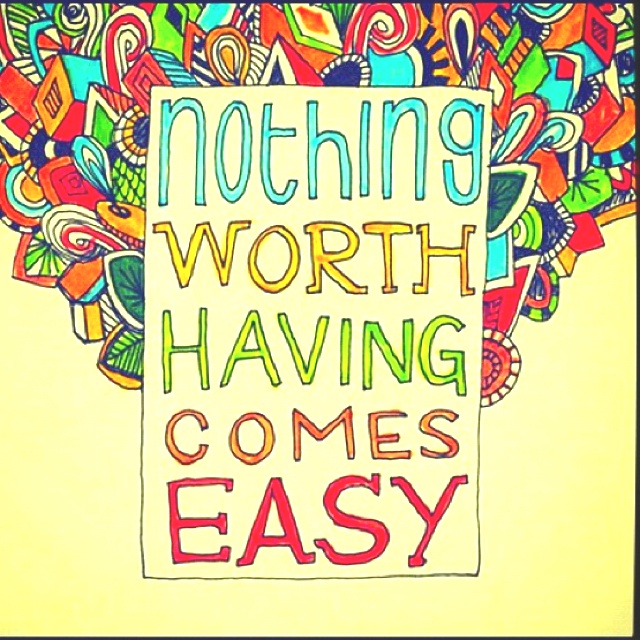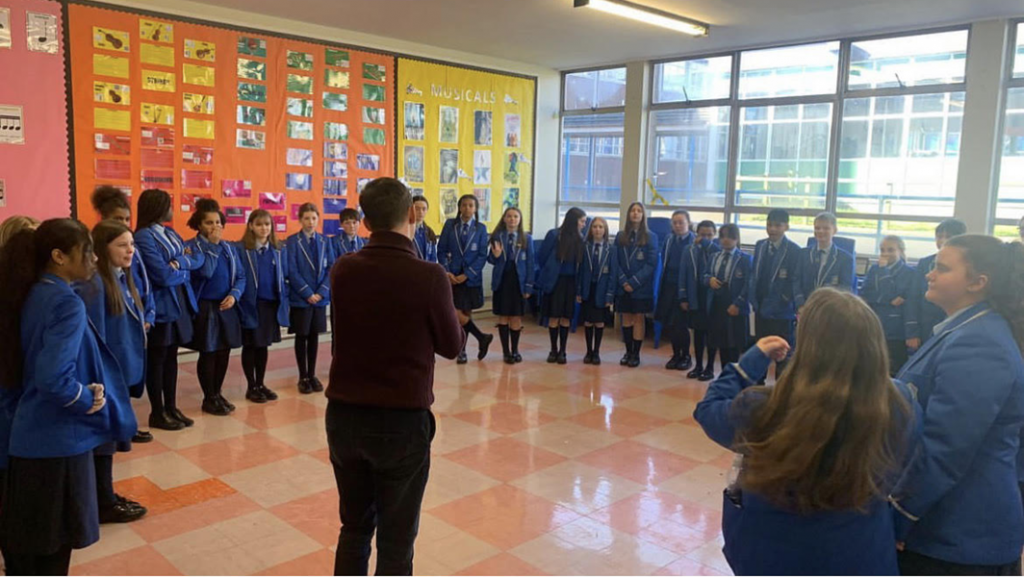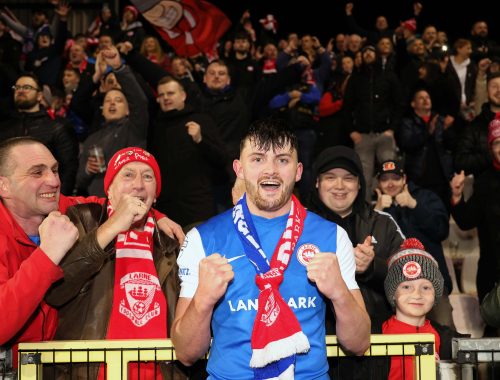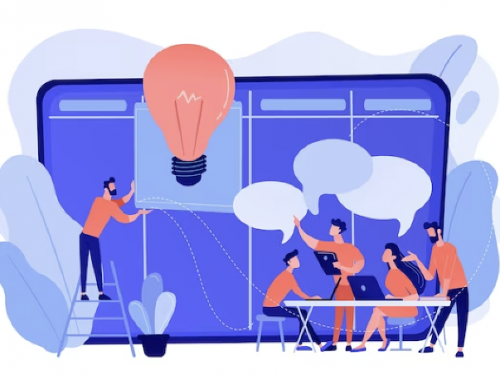
The Best Laid Plans of Mice and Men…
..Often go awry.” (Steinbeck, 1937) This was a lesson I learned all too well whilst recently completing my work placement at a local school.

@sjbc_portadown Instagram.
Though I thoroughly enjoyed my experience at St. John’s, the best experiences are those that teach us something.
As I reflect on some of the more challenging aspects of my placement, I have opted to use Schön’s model of reflection. This means outlining ‘the experience itself’, before thinking about how the situation could be approached differently to gain future insight. As stated by Susan Adler, ‘Central to Schon’s arguments are the concepts of “tacit knowledge,” “knowing in action,” and “reflection in action” (Adler, 1991).

Reflection in Action: (The Experience Itself)
One of the most lucrative learning opportunities for me occurred just three weeks into my placement. On Friday afternoons, I was tasked with assisting class 9A to the library to engage in a group reading activity. This was time I cherished as it was when the students really opened up and shared more personal details such as their interests and hobbies, or memorable things they had done in class that week. One student in particular, Student X, had neglected to take his turn in the reading circle each week during the time I had been at the school. Through speaking to some of the English teachers, I learned that Student X was non-verbal and displayed autistic tendencies, though not confirmed. On this Friday in particular, Student X raised his hand while another pupil was reading to the class. When called upon, he did not speak, instead merely pointed towards the book that the pupil was reading from.
This presented a challenge for me as I quickly brainstormed ways to break the communication barrier between him and I. Due to Student X’s inability to verbalize his thoughts, I began by offering prompts as to what he might be trying to say, such as naming the title of the book and asking if he liked something the character had said. This was to no avail and I was aware that Student X was becoming frustrated at being misunderstood. As I was starting to panic now, I thought about the ways I had seen other teachers break this barrier⸺ usually through a text-to-speech app on his iPad. Student X had, however, left this in the classroom, as the library was usually his quiet time to reflect. Wanting to avoid causing a scene by sending someone back to the classroom, I grabbed the nearest resource to me; a discarded mini whiteboard and pen. I handed these across the circle to Student X and waited as he shakily wrote something on it, instructing the pupil who was previously reading to continue, so as to not put Student X under too much pressure.
“Aesthetic communication occurs through creative expression. This would include all the art forms: music, dance, theater, crafts, art, painting, and sculpture.”
Deepika Phutela, “The Importance of Non-Verbal Communication”, (2015).

Trying to disguise my excitement, I scanned the whiteboard, which displayed the words I had dared not anticipate; “I want to read”. This in itself, whilst an exciting prospect, presented yet another challenge. The pupil reading, Sarah*, had waited her turn anxiously for two weeks. It felt wrong to steal that opportunity from her, yet I knew that discouraging Student X from reading could mean that he may never volunteer to read again. With this in mind, I devised a solution that could suit them both. I asked Sarah to pause her reading for a moment and informed the class we would be doing something we had never done before. As I study English and Drama as a Joint Honours, I told the class we would be integrating an element of drama into our reading today⸺ with Sarah and Student X taking turns to play the character of Candy and George. I elected Michael* and Katie* as our actors for the day, tasked with enacting freeze frames of the scene whilst Student X and Sarah read.


“The Future is in Our Hands” a piece of work done by a Year 8 student on Climate Change, with an especially fitting title; being given the role of an educator means striving for a future in which everyone is understood.
Reflection On Action: New Information Gained
Schon favours the approach of “reflection on action” as it fosters a reconstruction of ‘experiences that simulate practice, but with the pressures, distractions, and risks of the real world removed’ (Schon, 1987). Reflecting on this experience, I would evaluate my timely solution in a positive respect, as it incorporated learning outcomes from beyond the English curriculum in addition to building on pupils’ confidence. Asking other pupils to perform whilst Student X read was beneficial as it meant he was not the central focus, and accommodated for the prolonged pauses in his reading. When Student X stopped his attempt to read after a few sentences, I was able to swap out one of the children performing to take his place and encourage Student X to create freeze-frames instead. Now removed from the high-pressure environment, if I were faced with the same situation again I would be sure to emphasize my use of gesture and eye contact when communicating with Student X, as this was something I feel I did not make full use of. As stated by Feldman, research has indicated that ‘educators often send messages regarding their expectations via non-verbal cues such as facial expressions and overall body language’ (Feldman, 1990). This is something that could be used more generally in my teaching practice going forward, as showing an increased awareness about the signals I send subconsciously could prove invaluable in gaining control of a challenging classroom.
*names have been changed to protect confidentiality

What you want to ignite in others must first burn inside yourself.” — Charlotte Brontë
Aleisha McKeever
Sources Listed
Adler, S. (1991) “The Reflective Practitioner and the Curriculum of Teacher Education”, Journal of Education for Teaching, Vol. 17, No. 2, pp.139-150, p. 140. https://doi.org/10.1080/0260747910170203. As accessed April 13 2023.
Feldman, R.S. (1990). The social psychology of education: Current research and theory. Cambridge: Cambridge University Press. p. 267.
Phutela, D. (2015) “The Importance of Non-Verbal Communication”, IUP Journal of Soft Skills, Vol. 9, No. 4, , pp. 43-29, p. 44. https://www.proquest.com/docview/1759007009?pq-origsite=gscholar&fromopenview=true. As accessed April 12 2023.
Schon, D. (1987) Educating the Reflective Practitioner, toward a new design for teaching and learning in the professions, San Francisco, Jossey-Bass. p. 37.
Steinbeck, J. (1937). Of Mice and Men. Pearson Education Ltd.
It’s simple, but not that easy
You May Also Like

From Volunteer Videographer to Lead Graphic Designer: My Reflective Journey at Larne FC
18 April 2023
Keep On Keeping On – Bouncing Back From Disappointment
14 April 2023
